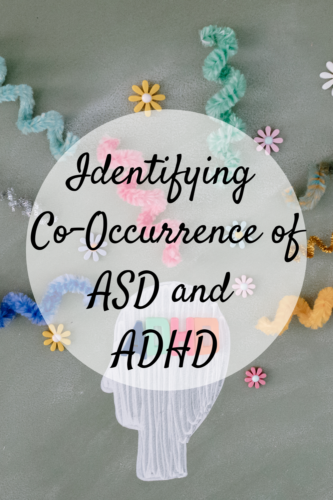
Attention deficit disorder (ADHD) is a commonly suspected culprit when a child displays difficulty sitting still, focusing on tasks, or maintaining eye contact. However, another neurodivergent condition, autism spectrum disorder (ASD), can create the same symptoms. Until recently, the American Psychiatric Association considered ASD and ADHD mutually exclusive, but recent developments have shown that children can have co-occurrence of both syndromes. In fact, research suggests a co-occurrence rate between 30% and 78%. While the disorders have many similarities, it is critical for diagnosticians to distinguish between the two to create proper treatment plans for children experiencing both.
Spectrum Diagnosis
While autism and ADHD have specific defining characteristics, the disorders fall on a continuum rather than a “yes-or-no” diagnosis. For this reason, ADHD and ASD symptoms can vary from person to person and diagnosticians are encouraged to take a broader view when evaluating individuals for either disorder.
ASD symptoms
Autism, as defined by the International Classification of Disease, 11th Revision, is characterized by inflexible, repetitive, and restricted behavior patterns. It also includes difficulty in starting and sustaining social interactions and communication.
ADHD symptoms
The APA Diagnostic and Statistical Manual (DSM-5) states that individuals with ADHD demonstrate hyperactivity-impulsivity or inattention patterns that interfere with development or functioning in various settings. ADHD can occur as a combination of hyperactivity-impulsivity and inattention, with a predominantly inattentive presentation, or with a predominantly impulsive-hyperactive presentation.
Evaluation Processes
Evaluations for autism and ADHD are conducted at different times of life and look very different. For example, for ADHD, the assessment (ADHD-2) Attention-Deficit/Hyperactivity Disorder Test differs from the assessment for ASD: (CARS™2) Childhood Autism Rating Scale.
ASD Evaluation
Generally, autism screening starts in infancy, when developmental delays at scheduled well-check visits spark conversation between pediatricians and parents. Specific autism screenings typically occur during 18- and 24-month doctor visits. If the examination of core autism areas demonstrates developmental delays, a more comprehensive evaluation is usually ordered.
ADHD Evaluation
ADHD diagnosis is often during the school years, sparked by obvious difficulties meeting the behavioral and attention demands of the school day. When ADHD diagnosis occurs prior to the diagnosis of ASD, the identification of ASD can be delayed by several years, particularly in girls.
Evaluation of Both Disorders
A single assessment will not identify the co-occurrence of ASD and ADHD. However, high rates of comorbidity encourage evaluators to look for symptoms of one when the other condition is present. Evaluations should include the following:
- thorough medical and family history
- developmental history to pinpoint the emergence of specific characteristics
- assessment of medical comorbidities, including diet, sleep, and gastrointestinal issues
- assessment of IQ and learning disorders
- assessment of adaptive skills and behaviors
- assessment of behavioral and psychological conditions typically accompany ADHD
- assessment of motor skills
- assessments gathered from multiple sources, including performance tools, interviews, behavior-based observations, and rating scales
Gathering data from all stakeholders using multiple instruments and settings will provide a comprehensive picture. For more information about assessment tools for ADHD, ASD, and other pediatric conditions and issues, check out the resources available from WPS.





